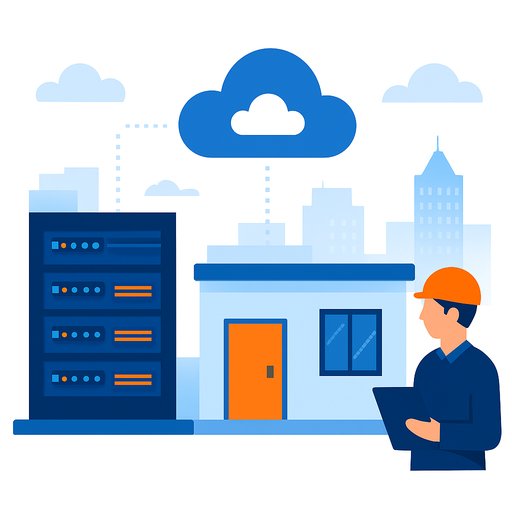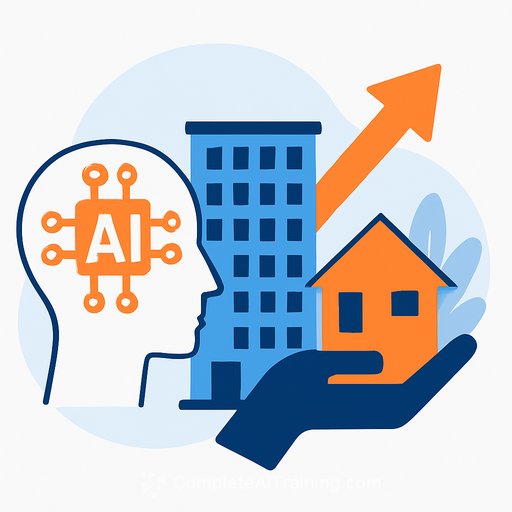AI Is Fueling a Desert Construction Boom in Arizona-And Investors Are Buying Big
There's a land rush across the Arizona desert, and it isn't for master-planned housing. Investors are locking up 100-acre-plus tracts for hyperscale data centers to feed AI demand. One of the most active buyers, Arizona Land Consulting CEO Anita Verma-Lallian, says her team acquires "a little bit further out" to stay ahead of competition and future-proof supply.
The strategy is simple: bank land before utilities, zoning, and infrastructure catch up. With more than 5,400 data centers operating in the U.S., AI workloads are accelerating the appetite for space, power, and proximity to fiber. For real estate and construction teams, this is a clear signal-industrial dirt with utility potential is the new prime inventory.
Why Arizona
- Large, relatively affordable parcels and fewer natural disasters.
- Access to solar generation and fast-growing metro hubs around Phoenix.
- Tax benefits for data center equipment and property assessments.
- Active public and private investment in tech infrastructure.
"The economic laws of supply and demand apply to land," notes Danielle Hale, chief economist. High demand pushes prices up, and Arizona checks the boxes for long-term value creation.
Where the Action Is
Buckeye is on deck for future data centers, backed by a solid workforce and strong commuter base. Verma-Lallian says local jobs are part of the thesis-and they're building for scale.
Near Phoenix, Google has committed $1 billion to a data center site. Microsoft and Meta are pursuing land, too. And in Belmont, billionaire Bill Gates has a $100 million smart city vision focused on renewable energy and autonomous mobility-ambitious, with practical hurdles like water and timelines.
Verma-Lallian also partnered with venture capitalist Chamath Palihapitiya on a $51 million industrial land deal near high-profile neighbors such as Gates, Toll Brothers, and Howard Hughes Corp. Portions have already been rezoned to industrial. The site could take up to a decade to fully build out, with phased groundbreakings planned over the coming years.
What's Driving Site Decisions
- Parcel size: 100 acres is a common starting point for hyperscale footprints.
- Power: Substation lead times, interconnection queue position, and long-term capacity.
- Fiber: Proximity to regional backbones and latency-sensitive routes.
- Zoning: Speed to entitlements and willingness to rezone to industrial.
- Incentives: Sales tax exemptions and property tax advantages for data centers (see Arizona's program: Arizona Commerce Authority).
- Water and cooling: Lower water-use cooling and heat management are becoming standard due diligence. Reference frameworks like water usage effectiveness.
Sustainability and Efficiency Are No Longer Optional
Verma-Lallian's team is prioritizing sustainable cooling that uses less water and exploring AI-driven operations to run facilities more efficiently. That's where deals are won with municipalities and where long-term operating costs are controlled.
Belmont's plan to lean into renewable energy and next-gen mobility shows where the market is headed. The projects that pencil today are designed around resource efficiency from day one.
Community Pushback Can Derail a "Done" Deal
Not every proposal gets a green light. In Pennsylvania, residents organized against a planned facility in Blakely; the developer walked away after public pressure. In Indiana, Google withdrew a billion-dollar campus outside Indianapolis that would have converted 470 acres of farmland, amid debates on job creation, power and water strain, and tax outcomes.
Lesson for teams: social license matters. Engage early, explain loads and mitigation, and put community benefits in writing.
What Real Estate and Construction Teams Should Do Now
- Pre-negotiate LOIs on 100-300 acre assemblages with expansion options.
- Secure interconnection queue position; align substation and line upgrades with phasing.
- Lock water rights where needed; validate cooling strategies that reduce consumption.
- Run TCO models: land, utilities, incentives, carbon, cooling, and operating overhead.
- Confirm zoning path and environmental studies; draft a fast-track entitlement plan.
- Build a community benefits package: traffic, noise, water, and heat reuse commitments.
- Structure phased delivery (shell-first, fit-out by demand) to match AI capacity ramps.
- Line up EPC partners with data center depth; pre-buy long-lead gear (switchgear, gensets).
- Explore onsite/near-site renewables, PPAs, and battery storage for resilience.
- Develop a workforce pipeline with local colleges and trade programs.
Quick Facts
- U.S. has 5,400+ data centers and counting.
- Typical target sites: 100 acres and up.
- Arizona activity includes Google's $1B project near Phoenix.
- Belmont's smart city plan is pegged at roughly $100M to start.
- A 470-acre Indiana plan was shelved after community and utility concerns.
- Large Arizona sites may build out over 10 years in phases.
Outlook
AI demand isn't slowing, and the capital behind it is hungry for utility-ready land. Teams that de-risk sites-power, water, fiber, zoning-and build trust with communities will win deals and deliver faster. Arizona is setting the pace, but the playbook travels.
Level Up Your Team's AI Fluency
If your org is expanding into AI-driven facilities or automating ops, upskilling pays off. See role-specific options here: Complete AI Training: Courses by Job.
Your membership also unlocks:






